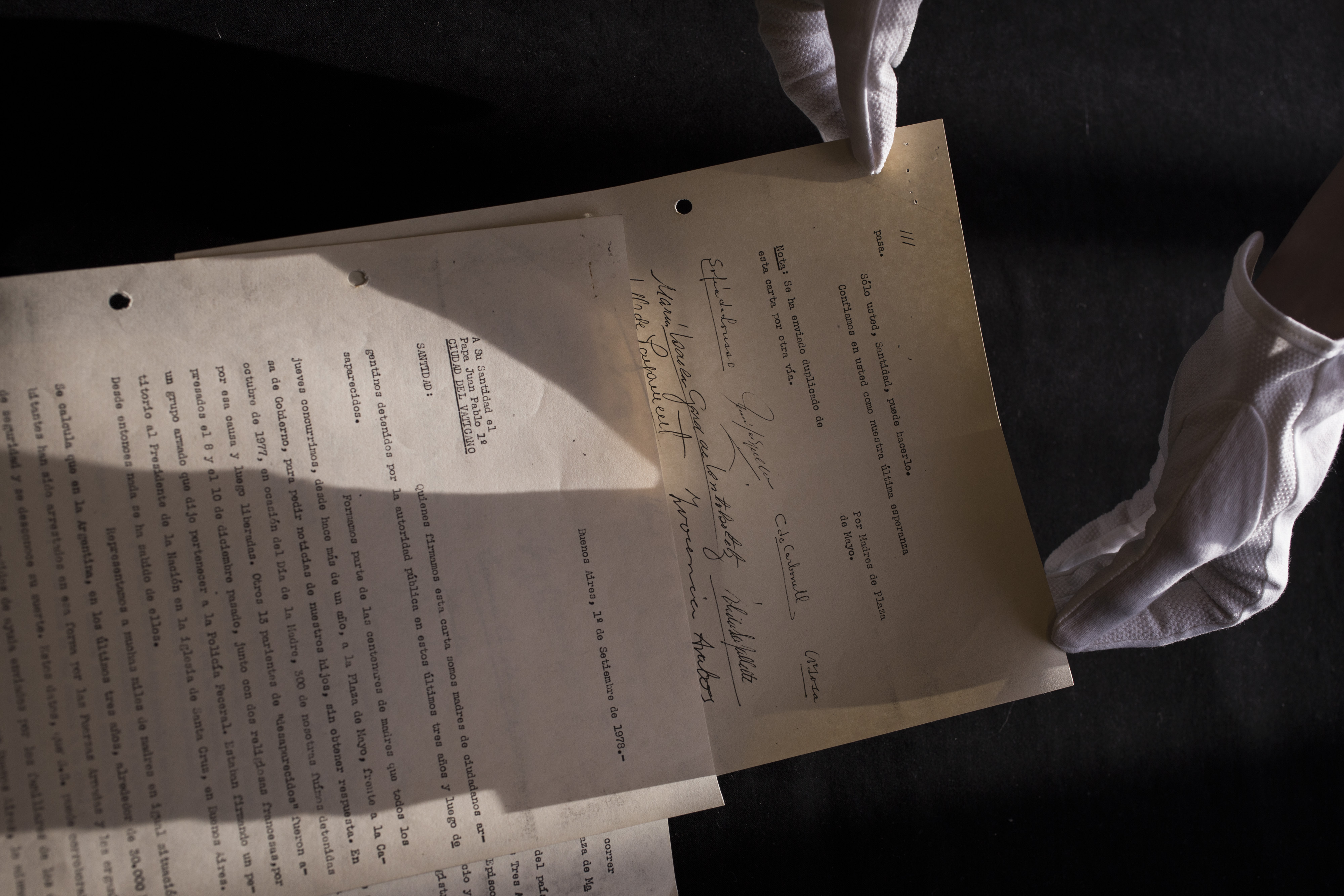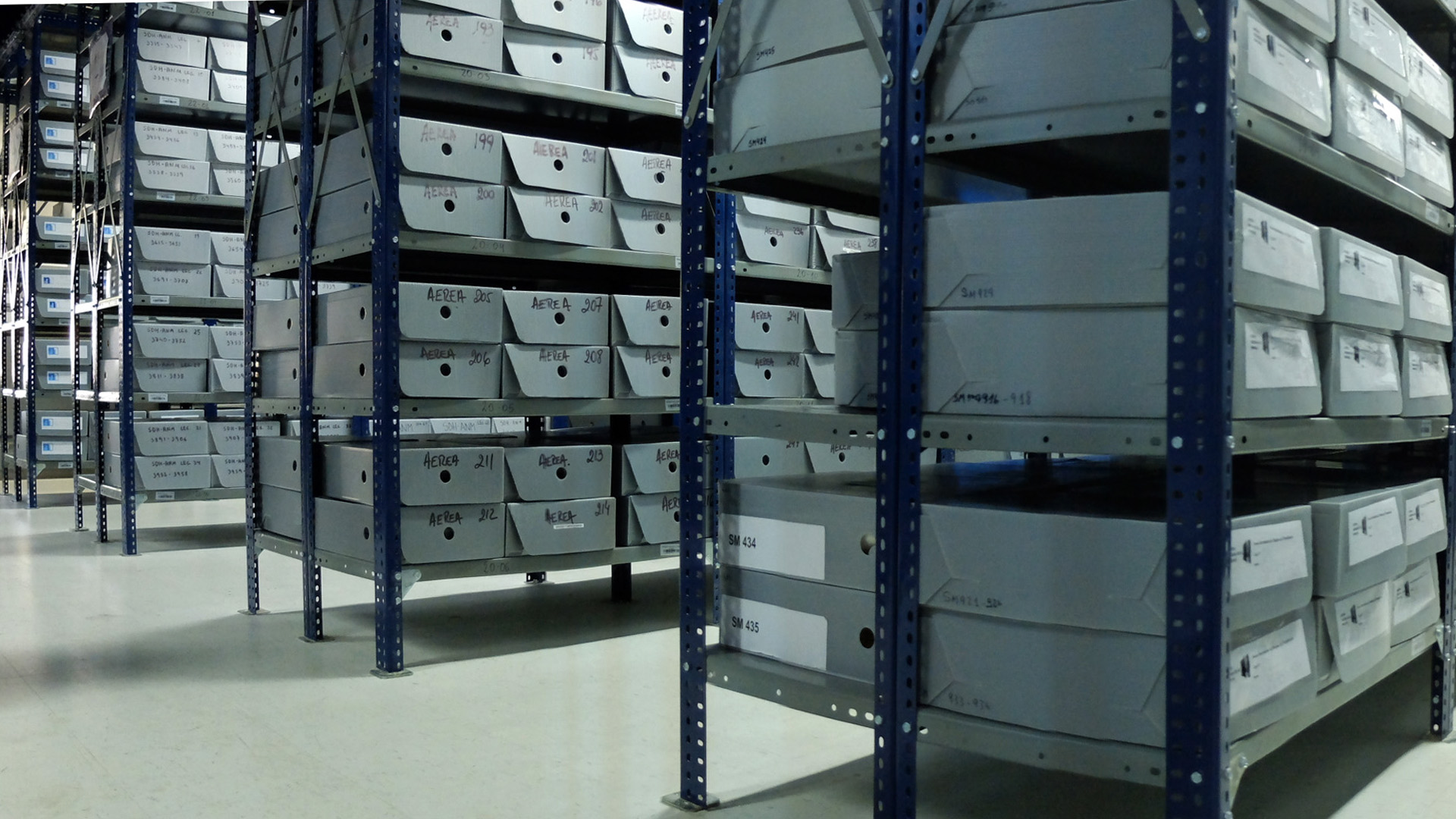

Project 2008/009. ARGENTINA
The origins of human rights organisations in Argentina. The history of resistance to the dictatorship through its primary sources
Although the human rights movement is very broad and other organisations have produced documents as essential as these for learning about history, by looking at the documents presented here, it is possible to learn about the history of the human rights organisations that form part of the Memoria Abierta Civil Association: their identity, their own field of action that is different from the others, their form of organisation. A chronological reading shows the different strategies adopted at each stage and the positions they adopted in the face of different circumstances.
The tour sheds light on other aspects of the historical process: the human rights movement’s relationship with other movements and social actors, the role of its leaders or its relationship with politics.
The project is not limited to the dictatorship period, since the human rights movement has played a fundamental role on the road to democracy and today. The trials of those responsible for serious violations of human rights – which were previously suppressed – and the many and varied initiatives for remembrance that we are experiencing today, owe their existence to a large extent to this movement, which has sought, through history, different paths to know the truth and advance towards the realisation of justice.
The archives of these organisations have been the object of allanamientos, destructions, incautaciones and permanent threats in times of repression. The organisations, knowing the importance of the documentation and information they collected, tried to keep their documents safe whenever they could, making copies and distributing them among their members. In this situation of constant danger, it was very difficult to keep a systematic record of the activities that were carried out, which is why it is so important to provide information that contextualises the production of these documents, which are sometimes difficult to understand by reading them alone.
The results of the project can be consulted here:
You can consult the technical report of the project and the rest of the information here:

Project 2006/001. ARGENTINA
Cataloguing, preservation and digitisation of Dr. Emilio Mignone’s documents related to his work in education, promotion and defence of human rights and contributions to a democratic transition
The “Emilio Fermín Mignone Personal Archive” Fund is made up of documents produced, preserved or collected by Emilio Mignone throughout his life, and reflect his work in the fields of education and the promotion and defence of human rights.
Emilio Mignone’s vast public career in education and his outstanding work as a leader of the human rights movement in Argentina make his personal archives valuable historical material for research, debate and reflection on democracy and forms of authoritarianism in Argentina.
Emilio and Chela Mignone’s children were interested from the outset in the possibility of improving the conditions for preserving and classifying their father’s archive, as well as making it available for public consultation, and they agreed that the Centre for Legal and Social Studies (CELS) was the right institution to carry out this task. Within this framework, between July 2007 and July 2008 the archival processing of the archive was carried out: sorting, classifying, describing and preserving the documentary collection, which made it accessible to the national and international public.
The fund’s descriptive tools include a description at fund level, a classification table, a topographical list of the reference material library, a table of correspondence of boxes by documentary series and a table guiding the transfer of original series, information that can be consulted in the technical report sent by the CELS at the end of the project.

On the CELS website you can consult the classification chart and the description of the fund, as well as part of the fund online:
Consult the Census Guide to Archives of Spain and Ibero-America: Census Guide
You can consult the project’s technical report and the rest of the information here:

Project 2008/007 and 2009/007. ARGENTINA
Reconstructing memory (1st and 2nd phase)
The objective ofthe Argentine National Memory Archive (ANM) is to recover and preserve documents related to the violation of human rights and fundamental freedoms in which the responsibility of the State is compromised, guaranteeing access to information and supporting the policies of Memory, Truth and Justice.
The ANM is the custodian of the archives of the National Commission for the Disappearance of Persons (CONADEP), legacies of the Secretariat of Human Rights (SDH), archives of the Secretariat of Media of the Presidency of the Nation and photographic collections.
The implementation of this project, carried out in two phases, has strengthened the defence of historical documentary heritage through the application of up-to-date techniques for the conservation and restoration of audiovisual and photographic documents.
Firstly, a workshop was held to train the staff involved in these tasks in order to optimise existing knowledge. It was held with the ANM’s conservators and restorers. With the training of ANM staff, the working methodology was strengthened by putting the Procedures Manual into practice in order to harmonise criteria.
In a second phase of the project, the following activities were carried out:
- An environmental situational diagnosis in the permanent storage area of the Annex Documentary Archive Building.
- A preliminary diagnosis of the state of conservation of the Enrique Shore photographic collection – CONADEP Documentary Archive.
- Final diagnosis of the state of conservation of the Enrique Shore photographic collection.
- Methodological elaboration of intervention on photographic documentary collections. Diagnostic file, technical file of the photographic collection and its clinical file.
- Preparation of recommendations for the conservation of audiovisual documents.

To find out more about the National Memory Archive, click here: Website
You can consult the technical report and recommendations for the conservation of audiovisual documents here:

Project 2008/012 and 2009/005. ARGENTINA
Improvement of the preventive conditions of the document archive of the Police Intelligence Department of the Province of Buenos Aires (DIPBA) (1st and 2nd phase)
The Commission for Memory (CPM) is an autonomous public organisation that promotes and implements public policies on memory and human rights. Its objectives and lines of action centre on preserving the memory of state terrorism and the promotion and defence of human rights.
At first, its actions were focussed on the territory of the province and then extended throughout Argentina.
The CPM is managed by the Central Archives and Records Division of the Buenos Aires Provincial Police Intelligence Directorate (DIPPBA). The so-called “DIPPBA Archive” is the first collection of documents from the intelligence services to be opened to public consultation in Argentina and is an indispensable source for studying the political and ideological persecution of men and women over more than half a century.
The DIPPBA had several divisions. One of them was the Central Documentation, Registration and Archive Division, which received all the information from the Central Intelligence Department (DCI). Its function was therefore to collect information and make legacies. The usual types of documents are: intelligence reports and memos, which reflect the communication between the different intelligence bodies; the different files (personal, of events, of organisations, of commands); the alphabetised carpets, which summarise the backgrounds of people who are in different files; the photos; the backgrounds of people. On the other hand, there is a wide variety of types of documents generated by the various “subjects under surveillance” who have been the object of kidnapping or “detention” by one of the forces.
The main aim of the project was to improve the conditions for the preventive preservation of the archive. The documentation was originally in wooden containers, tied with sogas, and some of it was dry and scattered on tables or directly on the ground, mixed together. Initially, these wooden containers were replaced by non-acid-free cardboard boxes. While this was good, the fact that they were not acid-free remained a problem.

Project 2009/008. ARGENTINA
“Rescued memories. Organisation, description, conservation and dissemination of the documentary collections held in the Provincial Memory Archive of the Province of Córdoba”.
The area of Conservation and Documentation of the Provincial Archive of Memory of the Province of Córdoba worked on this project on the series “Negatives of registration of extremists” transferred to the APM by Federal Court No. 3 on 18 August 2010.
The source was the D-2, Department of Information of the Police of the Province of Córdoba. At the beginning of the 20th century, the police took the City Council and neighbouring houses as their headquarters and, from 1940 onwards, part of these premises became spaces for the arrest and persecution of political activists, where numerous political activists, trade unionists and students who were kidnapped or massively arrested during marches or demonstrations throughout the 1970s ended up.
From 1974 onwards, the repression of the D-2 reached an unprecedented magnitude and became the central nexus between the military and the police to carry out persecution, kidnappings, torture and the strategic distribution of prisoners to other military and police centres.
On 15 June 1977, the Department moved to 748 Vélez Sarsfield Street, where the 10th office operated, and at the end of 1978, part of D-2, it moved to 222 Mariano Moreno Street. From 1980 onwards, the Information Department was renamed the General Intelligence Directorate, which functioned until 1983.
This documentary series is made up of photographic negatives of those arrested in the premises of the General Directorate of Criminal Investigations of the Police of the Province of Córdoba.
With the aim of storing and inventorying them in accordance with the legal obligation laid down by the Memory Law 9286, this project began. Firstly, a study of the series was carried out, in terms of materials and the different types and degrees of deterioration they present (physical, chemical and biological).
After the analysis, the negatives were digitised, the photographic artefacts were cleaned and recovered and, finally, specific preventive conservation measures for photographic collections were implemented.
To find out more about the archive, visit its website: Web del Archivo
You can consult the project’s technical report and the rest of the information here:

Project 2012/006. ARGENTINA
“Archival organisation and improvement of the preservation conditions of the documentary fund of the Association of Disappeared Ex-Detainees”
The Association of Disappeared Ex-Detainees (AEDD) was founded in 1984 and was made up of survivors of the concentration camps of the last military dictatorship in Argentina between 1976-1983.
In 1985, the participation of survivors was essential to sustain the trial against the military juntas. During the following decades, the AEDD, together with other human rights organisations and grassroots organisations, fought hard for the repeal of the laws that enshrined the impunity of those responsible for and carrying out the genocide, which were finally annulled in 2003. Since then, the AEDD has actively promoted and participated as a plaintiff in most of the legal cases opened against the genocidaires.
Since its creation, it has built up a documentary collection as a result of its work and donations from its members.
The first activity undertaken was to condition the space where the association’s Archive and Documentation Centre was to be installed, with the cleaning of the space, the installation of shelving and shelves and consultation points for users.
The documentary processing of the archive was then tackled. Firstly, the bibliographic and haemographic material was separated from the fund in order to treat it separately, carrying out a summary inventory of these funds and installing the printed material of other human rights organisations in materials suitable for their conservation.
The work focused on classifying and ordering the organisation’s archives, with the subsequent development of descriptive and access tools. The document series were identified and a classification chart and fund-level description were drawn up according to ISAD (G).
The positive impact of the project was not only for the public, but also for the members of the association themselves: many members decided to donate their funds to the association when they saw that the archive had ceased to be a paper warehouse and had become an organised space open to the community interested in studying human rights violations in Argentina, and in the processes of memory, truth and justice.

To find out more about the archive, visit its website: Web del Archivo
You can consult the project’s technical report and the rest of the information here:
